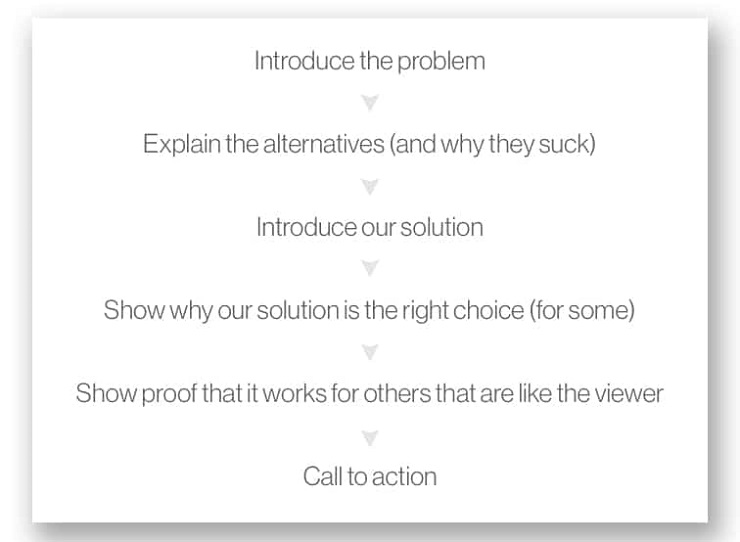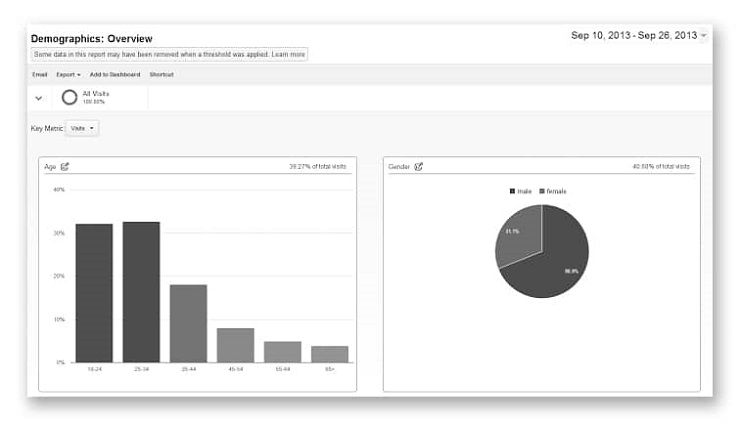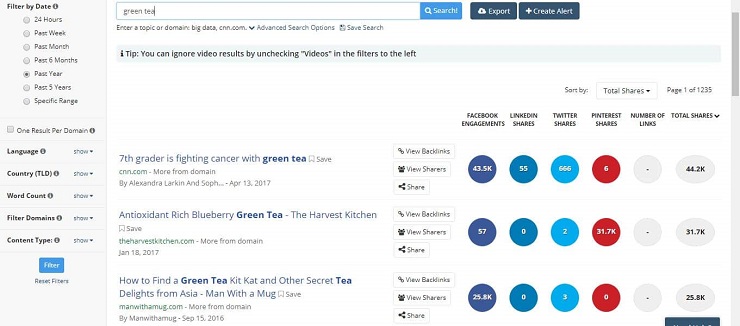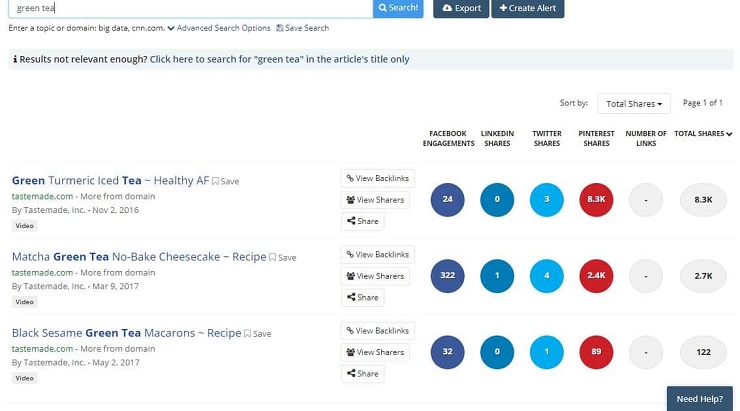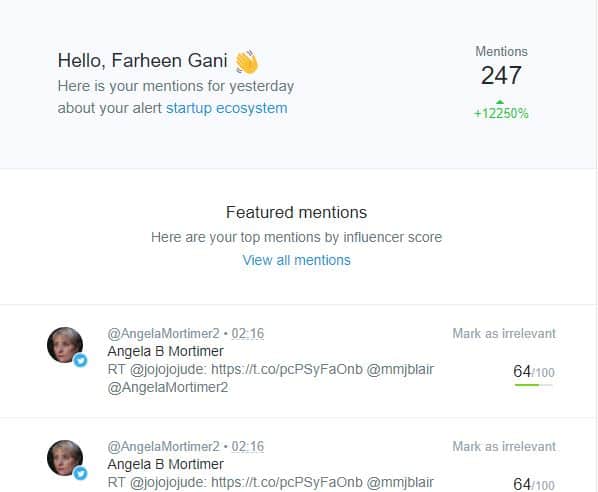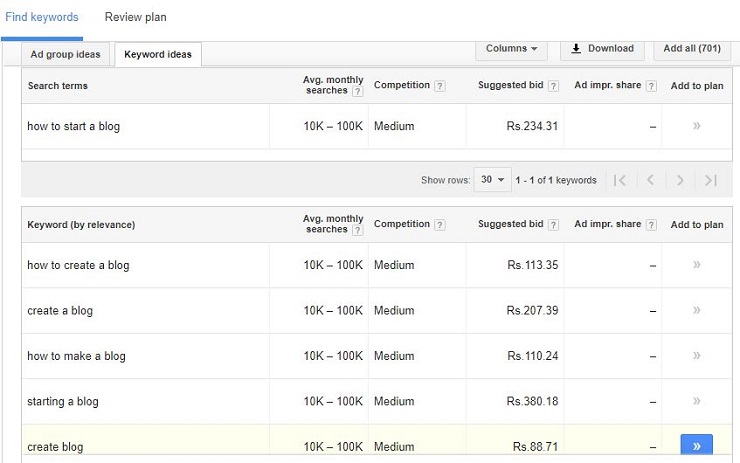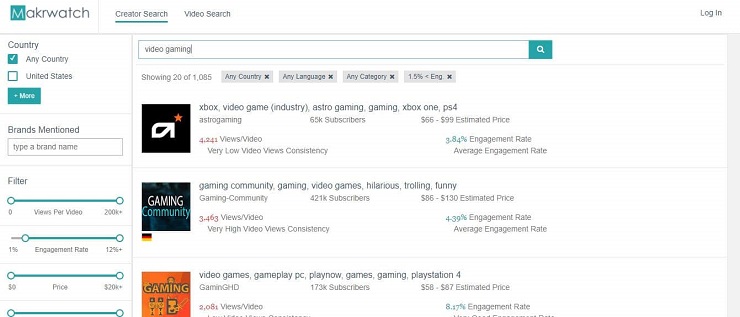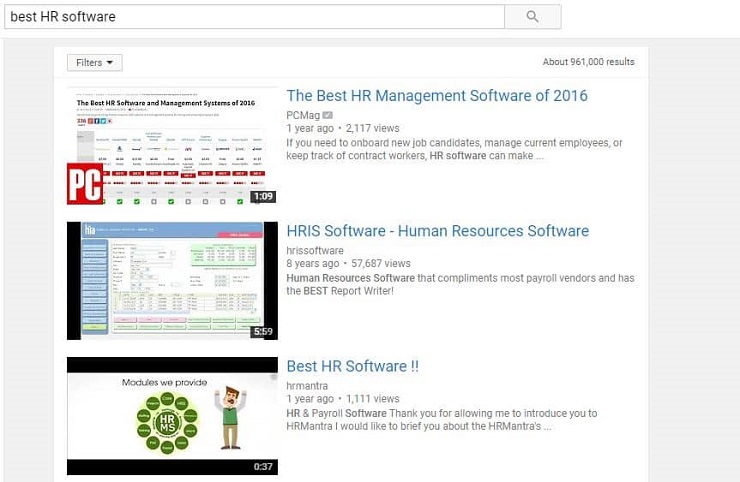Very few startups understand how to do video well. In a bid to jump on the video bandwagon, most companies end up with half-baked, boring video content that nobody wants to watch, let alone share.
It’s too bad, because videos generate 1200% more social shares than images and text combined and lead to an increase in 157% organic traffic from search engines. But that’s not all. Videos also influence buyer decisions, leading to more conversions. As it turns out, 52% of marketing professionals say that video has the best ROI among content.
But to cash in on these benefits, you have to get it right. If you want to create videos online that are shareable and draw traffic, they need to create strong emotional connections, or be incredibly useful, or both. And don’t worry if you’re on a small budget, it’s still possible for you to create compelling videos. All you need is a bit of creativity and some guidance.
In this article, we take an in-depth look at how you can create compelling video content, including an analysis of the most popular types of online videos, and all the best tools to use.
Table of Contents
Choose the Type of Online Video That Will Drive Traffic and Shares
Know Your Audience and The Content They Love
Create Video Online: Using the Right Equipment and Software
Creating Video Content That Tells a Captivating Story
Work With Influencers To Get More Traffic To Your Online Videos
Choose the Type of Online Video That Will Drive Traffic and Shares
When it comes to creating online video, most companies get stuck on the very first question: What type of video should I create? That really depends on what kind of traffic you want to attract.
Companies looking to attract new customers, for example, should create educational or how-to videos. These videos attract quality traffic from people looking for solutions. For instance, if you’re a content marketing agency, you might create videos such as, “How to create a content strategy from the ground up.” To get the maximum number of shares, create emotional and entertaining videos. These videos are most likely to go viral, as detailed by HBR.
On the other hand, if you’re looking to build trust in your company and convert prospects into customers, focus on testimonial and human resources videos (HR videos, which highlight your team). While an appealing testimonial video can make customers 64% more likely to buy your product, a good HR video can bring in over 2,000 shares! You may not use them all at the start, but a good video marketing strategy should incorporate all these types of videos.
Let’s take a look at how you can start creating each online video type, and some examples to get you inspired:
1. How To’s and Tutorials
Sunny Lenarduzzi, a video marketing expert with over 70,000 YouTube subscribers, recommends starting with educational or how-to videos for your first foray into the medium. The reason is simple—how-to’s or tutorials help prospective customers discover your content on search engines and send them your way. Educational videos are so popular with audiences that about 71% of high-profile thought leaders use them to build authority.
Tutorials that provide value to your customers can bring in quality traffic for years to come. So how do you get started?
First off, you need answers to the following questions:
- What are your customers’ most burning problems? What are they searching for? Are they looking for ways to save money? Be more productive? Or do they want to learn how to cook?
- What are the solutions that you’re an expert on? Which of those problems can you solve? Are you a financial wizard? Or the most productive boss/employee ever? Or can you cook mouth-watering delicacies?
- What topics are relevant to your product? Out of the topics above, which ones can you tie back to your own product? Do you have a personal finance website? Or a time-tracking app? Or a food delivery service?
At the intersection of the three points above lies the sweet spot, the one you want your how-to videos to fall in.
When creating tutorials, remember to throw in a bit of personality to make it interesting. Also, be sure to keep these videos succinct and focus on packing them with value, rather than flashy graphics.
See how Rand Fishkin nails this video.
If you work in online marketing, you’ve likely heard of Fishkin’s Whiteboard Fridays. Every week, he tackles super helpful questions related to SEO and content marketing. The concept is simple, easy to execute, and best of all, so effective. The video has been shared over 3,000 times!
MuleSoft also does a good job of educating its customers:
MuleSoft is a software platform that makes it easy for companies to build networks using APIs. And what better way than video to help customers navigate through all that jargon? The company’s YouTube channel has a number of helpful tutorials, customer success stories, and demos. While their channel has over 14,000 subscribers, this particular video has over 800,000 views!
Get Free Instant Access To 28 Proven Marketing Strategies For Startups Here!
2. Inspirational or Emotional Videos
Think of the last time you felt compelled to share a piece of content with your family, friends and colleagues. It’s likely that it had a strong emotional or inspirational impact on you. People love content that strikes an emotional chord, content we can relate to. In fact, emotions guide our social media sharing more than logic does. And one of the emotions we love experiencing is inspiration.
Creating emotional content can be tricky though. As with every good marketing strategy, it all starts with the audience. Think about what motivates, inspires, angers, and pleases them. For instance, if you’re targeting fresh graduates out of college, they might be concerned about choosing the right career path and doing work they love.
Next, think about which of those issues relate to your product. Going back to the graduates example, if your company helps people find jobs, creating videos that focus on finding your passion are perfect for reaching out to them.
Once you’ve decided on a concept, start working on a script. Unlike tutorials, which can be pretty straightforward, emotional and inspirational videos require you to exercise your creative writing muscles.
Craft a captivating storyline and use characters that are relatable. Don’t worry too much about promoting your product. If your video touches your audience, they will be happy to check out your product anyway.
For instance, this video from American Greetings hits the mark perfectly.
This video has a whopping 27,131,7000 views and garnered over 7,000 comments! Notice how they barely mention the product in the video, and instead focus on striking an emotional chord with the audience.
Another good example is Intel’s Meet the Maker campaign:
This video explores how technology can make a huge social impact, with a story that is both inspiring and touching.
3. Funny or Amusing Videos
We love sharing content that makes us amused and happy, and there’s enough evidence to back this up. An article in Harvard Business Review notes that the top responses that viral video Puppyhood elicited in sharers were warmth, happiness, and hilarity. In another study, Jonah Berger, Wharton Marketing Professor, found that we are more likely to share content that makes us feel amused, rather than sad. That explains the virality of all those cat memes, dancing babies, and singing chipmunks!
If you want your online videos to go viral, think of how you can incorporate these emotions into them. You may have heard that comedy is a serious business. It’s true, and not every brand can nail these types of videos. But no matter how drab you think your product is, it’s always possible to make it fun.
Think of aspects of your brand or company that you can play with. Maybe you can take the problem your product solves and add a funny twist to it.
Other sources of inspiration include the latest memes, trending videos, and jokes. You can connect one of these with your brand and make a funny video out of it.
Take a look at how Zendesk does this:
It’s really clever how Zendesk made use of the popular “Sh*t __ Say” videos to create a hilarious one of their own. Notice how this video is high on concept and simple on execution. With a spark of creativity, it’s possible to have your own viral sensation.
Another example is Conductor’s cheeky take on what happens when SEO and content are at loggerheads:
Who says a serious field like SEO can’t yield a fun video? This is a great example of a smart concept, script, and performance.
4. Explainers and Demos
Explainer videos give customers a sneak peek into your product’s superpowers and convince them to give it a try. A good explainer video boosts conversion rates and helps customers understand the ins and outs of your product.
Explainer and demo videos are a great way to engage new customers and activate old ones. But beware of bombarding viewers with one feature after another. A good explainer video outlines your user’s pain points, talks to them a in a language they understand (cut out the jargon, please), and shows them why your product is the solution they’re looking for.
The best place to start with demo/explainer videos is getting an understanding of your customer’s pain points, recommends Alex Turnbull of Groove. His company saw an 11% increase in their conversions after they replaced the explainer video on their homepage. Turnbull outlines how they achieved this in a handy blog post, but here’s a really helpful section on writing a script:
And here’s Groove’s new explainer video:
Notice how the new video focuses on solving the customer’s problem, rather than just telling viewers about all of Groove’s features.
Another great example of an explainer video is InVision’s 8 Critical Shortcuts in Sketch.
This one focuses on a specific feature of a product, and how users can make the best of it. What a great way to keep existing users hooked to the product! Think of your own product’s secrets that only you and your team are aware of, and pass them onto your users with videos such as this.
Get Free Instant Access To 28 Proven Marketing Strategies For Startups Here!
5. Testimonials
Testimonials or case studies are the best ways to build credibility for your product. According to Social Fresh, customer testimonials are the most effective form of content marketing. While testimonials usually feature one person talking about why they like your product, case studies are a bit more detailed than that.
They key to a good testimonial or case study lies in telling a relatable story. There are three ingredients of a good story: characters, conflict and resolution. Testimonial customers (or characters) often feel less real, and more rehearsed. If you want viewers to empathize with your main character, it’s important to first establish who they are and what they do for a living. This profile should ideally match that of your prospective customers.
Once you’ve established your main character, look deep into their desires and motivations. What are they trying to accomplish? Why haven’t they accomplished it yet? This is your conflict.
If you want to form an emotional connection with the viewers, don’t just skim the surface of the problem your character faces, dive deeper and explore how it affects his life. Remember, your customers are undergoing the same too.
Only when you’ve sufficiently explored the character and the conflict, you should turn to the resolution, that is, your product. Show how your product helped the customer solve their problem and saved the day.
Take a look at this brilliant testimonial video by Salesforce:
See how well it begins, pulling the viewer right into the story. Next, it outlines the problem, and instead of going on to say how great Salesforce is, it shows viewers how it helps Flint and Tinder deliver great customer service. The brand is barely mentioned in the case study, and yet it sticks with you.
Another good example is this one from Freshbooks:
This one focuses on establishing the character first. She feels like a real person, with real problems, rather than someone mouthing rehearsed lines. Freshbooks customers will sure relate to her. Also, it’s great how the story is set set up in “before and after” format, thus exploring the problem, and then moving on to the solution.
6. Human Resources (HR) Videos
These videos are a great way to showcase your company’s culture and reveal your company’s human side. By showing your human side, you can create a lasting impression in prospects and compel them to want to work with you. By seeing a “real” company that employs “real” people, prospects will be more compelled to trust you and your product offerings.
Good HR videos should be creative, playful and showcase your team’s passion for your product, rather than the product itself. Similar to testimonials, HR videos feature your teammates talking about working at your company. But how do you spruce up your HR video, so it looks doesn’t look like thousands of other HR videos out there?
Again, it all boils down to your characters and story. In this case, your staff are the characters. You probably already know your team well, but spend some time talking to them before you set out making the video.
Notice what stands out in their personalities, and makes them more relatable. Talk to them about their motivations and passions, what they like about their jobs, and if they truly wake up excited to come to work (most days, at least).
Next, think of some unique ways to showcase your company values and culture. For instance, do you have every team member involved in customer service once a week? Is your office pet-friendly? Do you have a special way of celebrating staff birthdays? Little things go a long way toward making your video refreshing.
The idea is to leave your viewers amused and invested in your company. You don’t necessarily need free lunches and ping pong tables to do that!
Check out how innovative Dropbox’s HR video is:
This video has over 140,000 views and over 2,000 shares. First, the clever use of muppets instead of employees themselves sets the tone of the video. While you may not be able to match the production values of this video, the takeaway is to be quirky and think out of the box. Second, the video tells a great story, talking first about company culture, then the perks and finally, the value they get out of their work.
And take a look at how a seemingly boring company makes behind-the-scenes videos on Snapchat:
Snapchat is a perfect place to showcase behind-the-scenes tours and events at your company. And even non-glamorous B2B companies can take advantage of it, just like Cisco does! Instead of blabbering on about their product features, they choose instead to focus on the work their team does, complete with emojis, filters, and jokes.
Get Free Instant Access To 28 Proven Marketing Strategies For Startups Here!
Know Your Audience and The Content They Love
Now that you have some ideas for videos, it’s time to learn the secret ingredients of highly shared videos. The first step involves taking a step back and getting very cozy with your target audience.
This step is critical if you want to make sure your online videos are shared extensively. Why? Because all too often marketers end up creating “great” content for no one in particular, and that’s who reads it: no one in particular.
There are two parts to researching your audience. The first is figuring out who exactly your audience is. Hopefully you’ve spent some time doing market research before launching your product, and you already know who they are. But when creating content, you need to delve a little deeper.
The second part is finding out what kind of content they love to share. This part helps you avoid second-guessing and create exactly the kind of content your audience is craving.
Let’s take a look at both of these below.
Identify Your Target Audience
When it comes to finding out who exactly you’re creating video content for, the first step is to closely examine your product or service. Wait, isn’t this about understanding your audience? Yes, and this introspection exercise will help you do just that.
Start by asking yourself the following questions:
- What criteria does your product fall in? Are you a B2B or B2C solution? Is your product a necessity or a luxury?
- What problem does your product/service solve? Does your product make people healthier? Improve their finances?
- Which demographic is most likely to use it? Is it for children, teenagers, or adults? Are you targeting mothers, professionals, both?
- What do they do for a living? Are they into finance, marketing, or real estate? Are they C-suite executives, entry-level, or mid-level employees?
Answer these questions in as much detail as possible. Then define your product and audience. For instance, you might write down something like:
“My product is a B2B software solution that helps new or mid-level marketing managers track leads and pass them onto the sales team.”
If your product is targeting a variety of audiences, be sure to make a different audience persona for each one, and develop content accordingly. If you’re looking for guidance on creating audience personas, Buffer has an excellent resource to help you get started.
The next level of audience research is to dig into some data and get your facts straight. One of the best free tools to do this is Google Analytics.
There are way too many ways you can use this tool, but for now, let’s look at audience analysis. Using Google Analytics, you can find out the following about your audience:
- Age
- Gender
- Affinity categories (such as sports fan or cooking enthusiast)
- … and a lot more!
Here’s some instructions on how you can enable Demographic and Interests data for your website.
Another great source of data is Facebook Insights. If you have a company page on Facebook, there’s a ton of valuable audience data sitting there. First off, there’s an overview of how many likes, how much engagement and reach your page has garnered. Next up is a detailed overview of your Likes, Reach, Visits, Posts, Video, and People.
That last one (People) is what you’re most interested in right now.
It gives you a detailed overview of your fans, including:
- Gender
- Location
- Language
- Age
Not just that, you can also find out which of your audience is most engaged (that is, who has liked, commented, and shared your posts) and then target them accordingly.
Identify Content Your Audience Craves
For the next step, there are a series of tools and techniques that will be indispensible.
Here they are:
Identify top-performing content in your niche
You’ve likely heard of BuzzSumo if you binge-read marketing content. This tool is a great way to figure out not only which content is performing well in your niche, but also who is sharing and amplifying it (though this option is only available for Pro users).
Let’s say you’re looking for the best performing content related to green tea.
You can instantly see the most shared articles and which social networks they’re popular on. If you only want latest articles, filter results by “Past Year.” You can also filter by language, country, word count, and content type. So if you specifically want to see video content related to green tea, here are the results:
You can see that green tea dessert videos are especially popular and so are its benefits and side effects. Another piece of information you can glean is the best platforms to promote your video content, in other words, where your target audience hangs out. In this case, it happens to be Pinterest (obviously) and Facebook.
Monitor your competitors’ and your own best performing content
Here’s another place where BuzzSumo comes in handy. As mentioned above, BuzzSumo also helps you filter content by a specific domain. For example, in the previous example of green tea, you can see popular videos for tastemade.com. On searching specifically by that domain, I can see their best content.
Similarly, you can use this tool to see your competitor’s and your own most popular content, in video and other formats.
You can also use Google Analytics to see which of your content attracts the most traffic (pageviews), rate of engagement (bounce rate), and how much time people spend on your content (average session duration). If you’re unfamiliar with Google Analytics, take a look at this guide by Social Media Examiner.
Talk to your customers
One of the most effective ways to know your audience is to talk to them.
There are two ways to do this. You can either talk to them face-to-face or virtually. If you’re looking to interact with customers firsthand, you might want to show up at events, meetups, and places where you think you’ll find them. For instance, a makeup brand might find prospective customers in a shopping mall, while a B2B SaaS company would find customers at a tech event. Use tools such as Meetup.com to find relevant events to attend.
If you’re looking to interact with customers virtually, there are plenty of options. Social media is a great tool for this. Ask relevant questions on community forums, hold Q&A sessions on Twitter and Facebook, and get active on Facebook and LinkedIn groups.
Another tool you can use to talk to existing customers is conducting surveys. There are various tools such as SurveyMonkey that can help you with this. Keep your questions short and to the point and offer an incentive for answering, such as an extended free trial. Ask for feedback for points you know a customer will be happy to answer questions about, for instance, when you’ve delivered excellent customer service.
Listen to your customers on social media
The next step is to actually listen in to customer conversations. As you read this, thousands of conversations are taking place on social media, communities and blogs, about your product and niche. Pay attention to these and take note of interesting and relevant ideas.
There are tools such as Mention that help you track conversations about your product and industry on social media and the web. Every time the keyword you select is mentioned on social media, it sends you an alert. The paid version starts at $29/month.
Communities such as Quora and Reddit are also great places to keep tab on trending topics and conversations. Find out what questions people need answers to, which topics they’re most interested in learning about and what solutions you can offer them.
Use the Google Keyword Tool
The first tool that marketers turn to when doing research, this will show you monthly searches for a particular term. First, you enter a keyword that you’re interested in finding search volume for. Let’s say you start with “how to start a blog.”
You can see the average monthly searches for this term. In the table below, you can also see which terms related to “how to start a blog” are searched for the most. For instance, you can see that people are keen on finding out “how to create a blog,” “how to make a blog,” and “best blog sites.” This helps you tailor your content much better, based on keywords that people are looking for.
Take a look at ShoutMeLoud’s in-depth guide to keyword research to make use of this tool to the fullest.
Get Free Instant Access To 28 Proven Marketing Strategies For Startups Here!
Create Video Online: Using the Right Equipment and Software
You don’t need a camera setup worth thousands of dollars to make a professional-looking video. You can round up all you need for less than $500.
In this section, we’ll take a look at some affordable video equipment options to help you create a video online.
Camera
Buffer has a great article on the best video equipment for every budget, but here are some of the best options for you:
iPhone: Who said amazing videos couldn’t be shot on a phone? The iPhone can help you create great videos, without having to invest in a camera! Use a stabilizer to avoid shaky footage.
Camcorders: These are surprisingly affordable (the Canon VIXIA HF R600 runs for $269) and offer some decent shooting capabilities, so if you don’t wish to invest in a DSLR, this one’s a good option.
Cameras: These are a notch above camcorders, and offer great video quality. You can find one in the price range of under $500 (Sony Alpha a5000 sells for $448) or well over $900 (Sony RX100 IV).
Other than these, you always have webcams and DSLR’s, the latter being the most expensive and also complicated to use, if you don’t have experience with one.
Microphone
Audio can either enhance a video or kill it. If you want a video with great sound quality, consider using the following:
Lavaliere Microphone: These can be placed on the person speaking and are a good choice if your video involves a lot of movement. The key to getting good sound quality with these is placing them properly. Check out the Rode smartLAV + Lavaliere Microphone for $79.
Shotgun Microphone: The shotgun mic can be placed anywhere in your studio. It picks up sound directly in front, and reduces ambient noise. An affordable option is the Rode NTG2 at $269.
If you’re looking for a more in-depth guide on choosing a microphone, Wistia has an excellent resource.
Editing Software
Once you’re done shooting, it’s time to put the video together. Here are some options for making the final cut:
Windows Movie Maker or iMovie: These are two free options you can use for the most basic type of editing. They’re equipped with the ability to add images, sounds, and a lot more.
VideoStudio Pro X10: If you want something a little more advanced, this is a good option at $54.99. It’s easy to use and offers the ability to add multiple effects and edit HD quality videos.
Final Cut Pro X: This one is an Apple offering, but more advanced than iMovie. It allows you to import videos from iMovie, edit with pro quality and come up with dazzling results. All of this at $299.99.
Creating Video Content That Tells a Captivating Story
Storytelling is your most powerful tool when it comes to creating videos online that capture the viewer’s interest and keeps them hooked. Why are stories so powerful? They help us connect with people across geography and era, and find meaning in our own lives. Powerful stories convey messages that can stick with us for a lifetime, such as the triumph of good over evil, importance of friends and family, and how love transcends all.
If you take a look at the online video examples above, they all have one theme in common: they tell stories that keep you interested. So how do you craft your own story?
Here are some steps to get you started:
Focus on One Message
A good story focuses on one central message or theme, like friendship, love, or loss. With respect to video content for your company, you can focus on the type of video you want to create, such as a testimonial or a behind-the-scenes video.
Think of the message you want your viewers to walk away with. Is it that your product is the best solution to their problem? Or that your company is a great place to work at? Keep these in mind while you develop your plot line.
Have a Strong Plot
Once you’ve zeroed in on your message, think of a suitable plot line. A plot should have a beginning, a middle, and an end. At the beginning, you introduce the character and the conflict (whatever it is that they’re trying to accomplish but can’t), in the middle you describe the character’s journey through the conflict, and in the end you offer a resolution.
While the above sounds like an easy enough guide to follow, great plots are tough to design. Go too much by the book and you run the risk of sounding just like everyone else; ignore the norms and you may end up with a half-baked plot.
The type of video you select should offer some insight into how to develop your plot. Invest as much time as possible talking to your current and prospective customers and employees. They will be your main characters. This is where getting to know your audience really makes a big difference.
To find out what their desires, motivations, anxieties, and troubles are, ask them specific questions such as:
- What do you do for a living?
- What problems do you face accomplishing X task?
- What are your goals in life (professional and personal)?
- What topics do you hope to learn more about?
With all the answers you receive, develop multiple plot lines. Don’t throw away the character interviews just yet. They’ll help you in the next step.
Develop Your Characters
The characters are the second most important of a story. That character interview you saved in the last step? Now’s the time to bring it out.
Here are some more observations you can add to make your characters feel real:
- What quirks make your character unique?
- What does their work desk look like?
- Do they find their work and personal life fulfilling? Why or why not?
- What are their hobbies?
You may or may not use all of this information in your video, but adding a few personal elements to your characters makes them more relatable to viewers. It also helps you get a better understanding of them, so you can add nuances while working on the script.
Dialogue is a critical part of characterization. If your character is a customer, allow them talk like one. Don’t make them use high-level product jargon you know they would never use in real life. For instance, if you’re a customer support app, don’t make your character spout lines such as “intuitive software” and “advanced automation tools.” Instead, make them use plain speak such as “software that understands your needs and offer tools that allow you to automate processes.”
Get Free Instant Access To 28 Proven Marketing Strategies For Startups Here!
BONUS: Work With Influencers To Get More Traffic To Your Online Videos
So you created some compelling online videos your audience will love…now what?
While great videos will attract traffic, there are some other strategies that can help you get massive amounts of traffic, and one of those is influencer marketing.
Social media has spawned a new range of influencers who may not necessarily be big movie stars, but they command an audience’s attention all the same. Think YouTube stars John Green, Brian Kelly, and Michael Fischbach.
Working with influencers can help you garner more views, reach new audiences, and finally, boost sales. The key, however, is to find influencers in your niche, establish a relationship that is beneficial to both parties and develop content that their audience will enjoy.
Here’s a handy guide to get you started with influencer marketing:
Find the Right Influencers
Influencers work hard over a period of time to build loyal followings that connect with them and trust their opinions. It’s no wonder then that they’re fiercely protective of their audiences and do not recommend just about any product/service to them. Thus, it’s important to first conduct research on which influencers you’d like to collaborate with.
While there are several tools to help you find bloggers to collaborate with, not many of them come equipped with finding influencers that make videos. However, we’ve outlined two ways you can find the perfect influencers for your videos.
First, you can use Makrwatch to find influencers in any niche. Let’s say you want to find influencers in video gaming.
As you can see, you’ll get an assorted list of results, with a number of subscribers, views per video and engagement rate. For now, however, you want to focus on getting the best results, so filter this list by number of subscribers (>1m) and views per video (>100K). Next, select the relevant category of video (in this case, gaming).
You’ll see a much more refined set of results that you can now vet on YouTube. Once you have about 10-15 channel names, head over to see for yourself, how often they post videos, what are the comments on their videos, and the number of views they receive. Also take a look at how often they collaborate with brands and the engagement levels on those videos.
The second way to find video influencers for collaboration isn’t new—it’s plain old Google and YouTube search. For instance, a quick Google search of “best video gaming channels” throws up the following search results:
You can see a page full of helpful articles pointing you to a bunch of channels. Click on a couple of them to begin your search. You can also search for influencers on specific platforms such as Instagram and Snapchat if you wish to explore those.
Similarly, a search on YouTube for “video gaming” gives the following results:
You can refine these by selecting duration, type (channel, video, playlist), upload date, and view count. Another way you can use YouTube search for finding influencers is searching by the type of content you wish to create. For instance, if you wish to create a software review video, you might search for “best (type of) software” or “best software for (use case)”
From the numerous results above, you can then select the videos with most views and see how engaged their audience is.
While finding the right video influencers might take some digging, the key is to keep in touch with video content in your niche, on YouTube and other social media platforms, and see which ones are most popular with your audience.
When selecting an influencer for your video content, take a look at three aspects: the content they create/promote, the size of their audience, and their level of engagement. Make sure the content they create is relevant to your product and that they’re targeting the same audience that your product is.
As far as audience size is concerned, remember, bigger is not always better. It depends on how much engagement their posts enjoy and how connected they are to their audience. A small, highly engaged audience is better than a large group of uninterested followers.
Establish a Mutually Beneficial Relationship
There are several ways you can work with influencers. You can get them to do a product review by sending over free samples, ask them to feature your brand in their own videos, or ask them to star in one of yours.
For example, see this review of Basecamp by TechnologyAdvice:
Remember that free products or services may not always be enough to get an influencer to work with you. You may have to pay them a commission, an upfront fee, or payment based on the engagement they generate.
According to Digiday, influencer fees fall in the following ranges:
- Commission: 25% of sales
- Appearance fees: $30,000
- Upfront fees: $1000 – $100,000, for influencers with 100,000 and up, on Facebook or Instagram
As you can see, influencer marketing doesn’t come cheap, so you need to make the most of it.
If you have a very small budget though, you can try working with micro-influencers. Micro-influencers generally specialize in a particular niche, and command a smaller following than a bigger celebrity. However, even with a smaller following, they generate a higher level of engagement, as per a report by Markerly. They also have a more targeted audience, making it easier for you to reach potential customers. A lot of these influencers would also be willing to work with you for free, in exchange for your product. Instead of working with one major influencer, consider working with 20-30 micro-influencers.
Develop a Winning Influencer Marketing Video
Remember, even videos with the most influential personalities can backfire if their audience doesn’t like it. So as far as the creative side concerned, trust the influencer and let them take the helm. You can always work with them to develop content, but don’t try to dump your content on them.
Give them a brief as to what you wish to convey, and provide them with as much information as possible about your brand and its mission. After that, hand over creative control to the influencer. They most likely have a unique style and perspective that their audience enjoys, so let that come across in the video.
—
Great online videos take hard work and dedication, but the results are worth looking forward to. Got any questions or challenges you’re running into around creating video online? Do let us know in the comments below.

